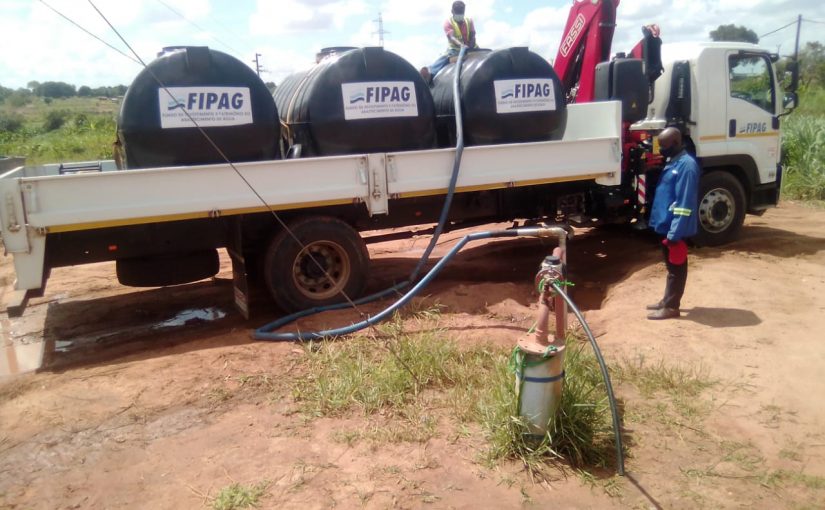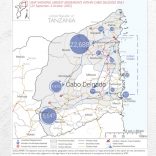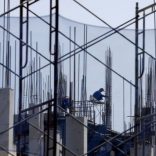JICA Mozambique delegation visits FCM in Campinas, Brazil, to discuss cooperation in medical ...
Mozambique: FIPAG trucks to supply water to more than 700 ,000 in Nampula city – report

Photo: Rádio Encontro
The little rain that fell in the city of Nampula on Saturday and Sunday revived the reservoir that supplies water to the city to almost 30 percent of storage capacity. Even so, the water supply situation in Nampula remains chaotic, forcing FIPAG to redouble its efforts to ensure that residents have sufficient potable water.
At the moment, several mitigation activities are underway, with emphasis on the operationalisation of emergency pumps, the readjustment of system operating rules and the operation of the distribution network, and the imposition of selection and distribution regimes on a per distribution centre basis.
These activities have contributed to improving water distribution and guaranteeing an acceptable service until the normalisation of rainfall and the recovery of dam volumes.
Other actions consist of operationalising boreholes in Namiteca, installing eight water intakes in Namiteca, Muhala-Expansão, Namicopo and Muatala, building 31 additional fountains in neighbourhoods and mobilising 15 water tanker trucks.
According to FIPAG, these activities, taken together, have allowed the water supply service in the city of Nampula to distribute on average 18 to 20 thousand cubic metres of water per day, meeting the needs of 700,000 residents.
FIPAG however recognises that there is still a need for mitigation and rational water use activities.
“FIPAG will continue to develop long-term actions to ensure water supply to the city of Nampula and mitigate the effects of climate change, at this stage characterised by scarcity of rain and changes in the usual rainy season profile,” said Elidio Khossa, Director of Central Operations Services at FIPAG, while deploring the fact that dam levels remain too low to continue satisfying demand.
With water becoming more and more scarce, not only in Nampula but country-wide, Khossa called for rational use and improved preservation of supply infrastructure.
For his part, the Director General of Ara Norte, Carlitos Omar, said that, although the water level in the Nampula dam was still low, everything indicated that there was light at the end of the tunnel.
“If the rain continues to fall this week, we could reach 40% of storage capacity, compared to 30% at the moment,” Omar said, acknowledging that the water in the Nampula reservoir barely meets demand in the city.
However, weather forecasts indicate that rainfall may be slightly above average from January to March, mainly in the province’s interior districts, which may improve storage levels in the dam.
Alberto Colarinho, Provincial Director of Meteorology in Nampula, said that sporadic, weak and moderate rainfall is expected in various districts, including the city of Nampula. This may be insufficient to fully address the water situation of the city, but thing suggests that the next seven days might see an improvement, he said.
This Monday, the six boreholes in Muatala were visited by technician teams and tanks set up in various parts of the city, with provision made for the deployment of water supply trucks.
People living near the mobile tanks professed themselves satisfied, while admitting that they do not fully solve the problem.
By Elísio João












Leave a Reply
Be the First to Comment!
You must be logged in to post a comment.
You must be logged in to post a comment.